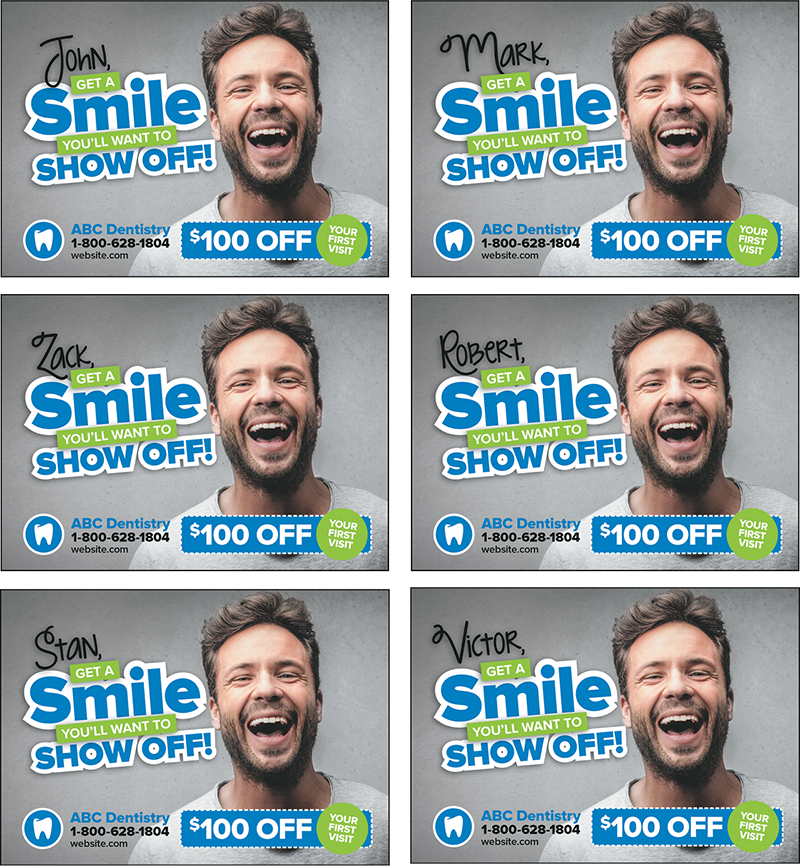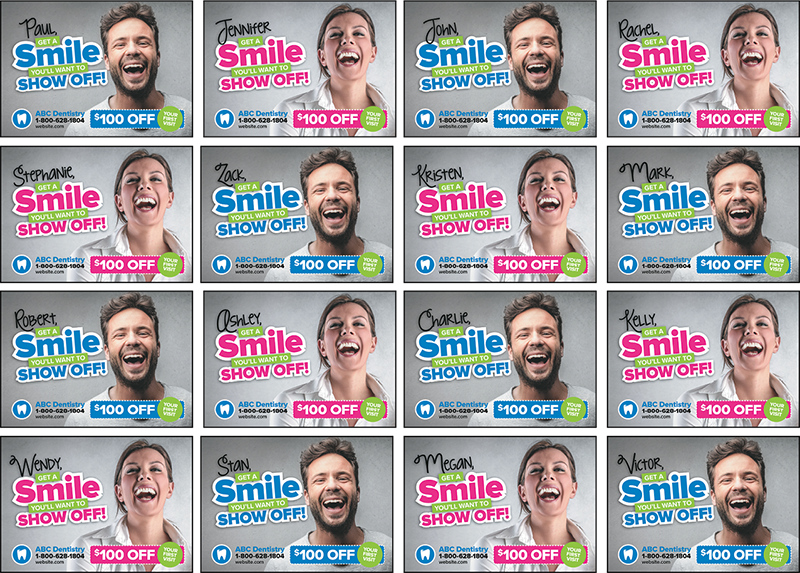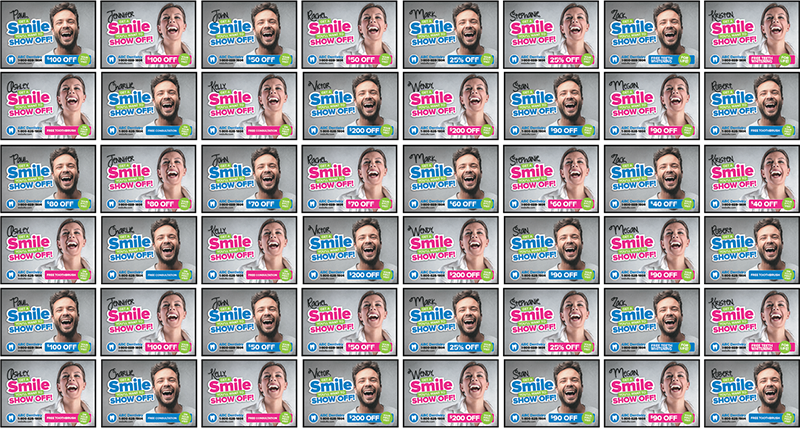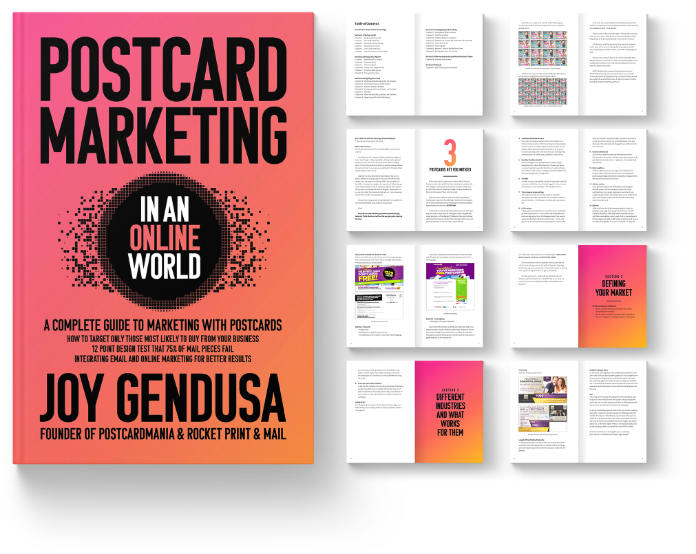Just when you’re thinking you’ve got a handle on this whole “postcard marketing” thing, I’m going to kick a little sand on your fire: there are actually two kinds of postcards that you need to know about!
*Cue threatening theme music.*
But fear not! The distinction (while important) is actually quite simple, and I’ll explain it now.
There are two types of postcards: Static and Variable.
Static postcards are the most common and traditional type of postcard. This is when a design is created, and the exact same design is mailed to everyone on the mailing list. So, everyone would get a card that looks like this:
Static Postcard

Variable postcards have designs that can actually change based on who the recipient is. The easiest example is a postcard personalized with the recipient’s name. Everyone gets a similar looking card, but each postcard is customized with the specific name of the person receiving it. This type of postcard requires relatively recent technology, and while they are not as common as static postcards, they are becoming more and more popular with each passing day, for reasons that will be clear to you in a moment.
But before I get to those reasons, here’s a quick note on that technology I mentioned: it’s actually been around for longer than you’d think. However, until recently, it was so expensive to use that barely anyone did. Once the technology (known as Variable Data Printing) became affordable for small businesses, variable postcards began to really take off.
Essentially, Variable Data Printing (VDP) is a computer program that pulls data from your mailing list and then adjusts the postcard’s design to reflect that data. So instead of everyone getting the design above, you can tell the program to customize the card with the recipient’s name, and you’d get designs like this:
Variable Data Postcards with Variable First Name

And then you can get more specific and tell the program to use a masculine or feminine image, based on the recipient’s gender, like so:
Variable Data Postcards with First Name & Gender Variables

And even more specific by testing out different offers based on the specific neighborhood the recipient lives in:
Variable Data Postcards with First Name, Gender & Offer Variables

As you can see, the level of personalization adds up quickly. And THAT is the reason more and more businesses are switching to variable postcards. Think about it...
When you’re in a busy, crowded place, and you hear someone shout out your name, what do you do? Consciously ignore it and keep going? Or do you automatically turn to see if it’s for you?
I do the latter, and I bet you do too. Now, let’s go to a whole-notha-level. Let’s say we’re talking about a prospect, and the busy, crowded place is their mailbox... See where I’m going with this?
If your postcard shouts their name AND is tailored to their specific interests, concerns, etc., they are way more likely to stop and give their attention to it. And with variable postcards, now there is a way to do just that!
NOTE: Most printing companies have their own term for Variable Data Printing. Some call it that. Others use terms like “custom postcards” or “digital printing.” At PostcardMania, we call our product Personalized Postcards. It’s all pretty much the same thing. Just wanted to clear that up for you!
Postcard Marketing in an Online World
By Joy Gendusa, Founder/CEO PostcardMania

